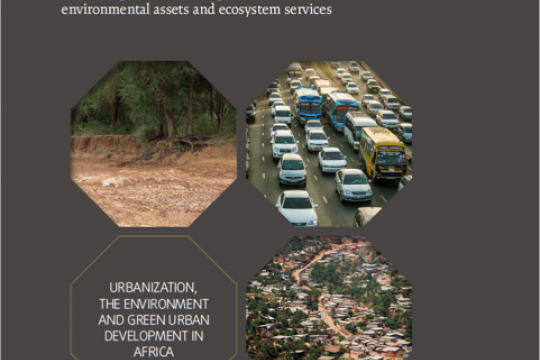Africa’s cities growth might have kicked off a bit later than many other developing world countries, but they are growing fast. This presents an opportunity to do so in a way that creates ‘a more harmonious relationship between their natural and built environments. This is according to a new report by the World Bank, which concludes that ‘focused action is necessary’ in order to avoid ‘largely unchecked (negative) impacts on the natural environment, and the degradation of natural assets and ecosystems within African cities’.
The report, Greening Africa's Cities: Enhancing the Relationship between Urbanization, Environmental Assets, and Ecosystem Services puts a spotlight on Kampala in Uganda, Dar Es Salaam, Tanzania, and eThekwini, formerly known as Durban, on the South African east coast.
Features that are unique to Africa’s urbanisation trends include ‘substantially lower per capita incomes, high reliance on biomass fuels, extensive informal settlement with poor service levels, and the exposure of cities to environmental disasters, such as floods’. These are putting pressure on African cities’ natural environment and eroding the value of environmental assets such as green spaces, forests, and water resources, the World Bank stated at the launch of the report in Dar Es Salaam earlier this month.
EPRU director Dr Jane Turpie co-authored the book, along with Roland White and Gwyneth Letley.
‘There were over 100 participants at the launch of the report in Tanzania, mostly mayors and officials of 10 African cities, and people from a range of non-governmental organisations, such as TNC, Conservation International, and ICLEI,’ says Turpie. They all received a copy of the synthesis report.
‘In Kampala, the focus was on degraded wetlands, where we showed that while it would be worthwhile to restore them in that city, the actual costs involved made it unfeasible,’ Turpie explains.
The study from Dar Es Salaam showed that green engineering measures are not feasible because of the building structures and soils. Rather, catchment-to-coast rehabilitation provides the most feasible ‘green’ development option for alleviate flooding there.
‘There was a strong message that tolerating the human invasion of riparian and floodplain areas carries very high costs.’
Finally, the Durban case showed that in the absence of major informal settlements, green engineering measures perform well and that the simpler measures - detention basins and treatment wetlands were most effective and affordable means of addressing flooding and water quality. The research also showed that river buffers and conservation areas perform just as well for some aspects and that green engineered infrastructure can be substituted with ecological infrastructure to a large extent, also bringing significant amenity benefits.
The full Greening Africa's Cities report is available for download here.
